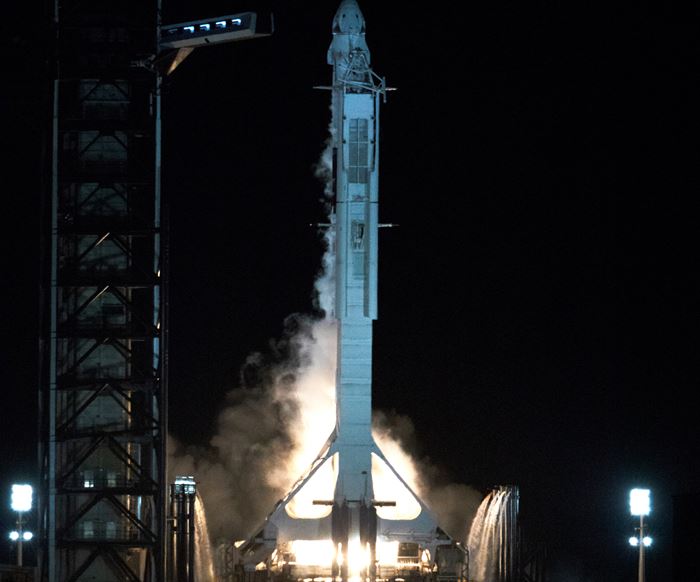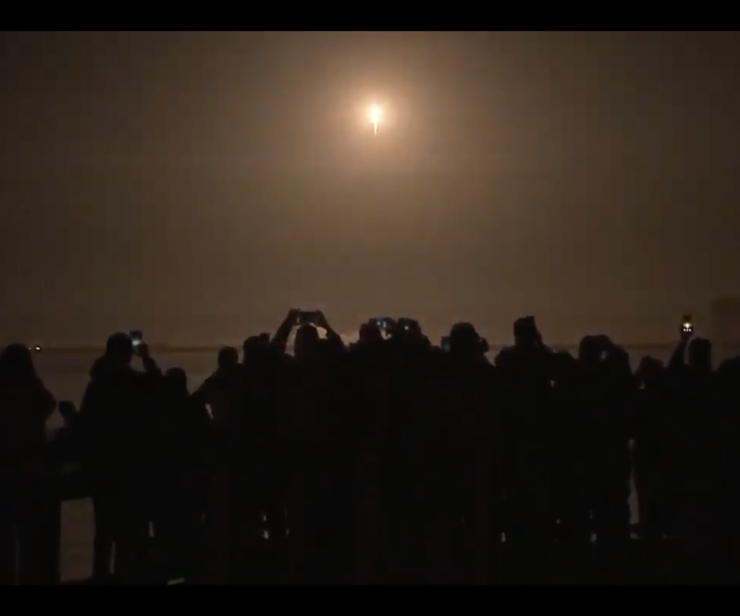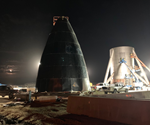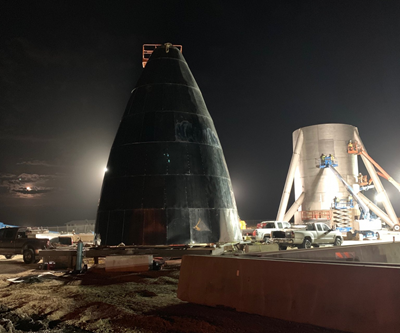SpaceX crew capsule launches to space station
The Demo-1 flight test successfully launched SpaceX’s Crew Dragon spacecraft aboard its Falcon 9 rocket, marking a first step toward the next NASA crewed space mission.
On Saturday, March 2, 2019, the first commercially built and operated American crew spacecraft and rocket launched from NASA’s Kennedy Space Center in Florida to the International Space Station. Aboard the SpaceX Falcon 9 rocket, which is composed of a carbon fiber composite fairing, the SpaceX Crew Dragon spacecraft lifted off at 2:49 a.m. EST from Launch Complex 39A.
Known as Demo-1, SpaceX’s inaugural flight with NASA’s Commercial Crew Program is an uncrewed mission designed to test the end-to-end capabilities of the new system. The flight brings NASA one step closer to sending the first astronauts to the space station from the U.S. since the last space shuttle mission in 2011, although more testing will be done before the spacecraft will be ready to fly human astronauts.
For Demo-1, Crew Dragon is carrying more than 400 pounds of supplies and a lifelike test dummy named Ripley that has been outfitted with sensors to provide data on potential effects on humans traveling aboard the spacecraft. Crew Dragon docked to the space station at about 6 a.m. on Sunday, March 3, and will return to Earth on Friday, March 8 after five days docked to the station. Live coverage of the undocking will air on NASA Television beginning at 2 a.m. on March 3.
All the launch pad and vehicle hardware, and the launch day operations, were conducted in preparation for the next flight with crew aboard, including the control teams and ground crews. As Falcon 9 approached the space station, rendezvous activities, automated control and maneuvering capabilities were all tested before the final docking sequence.
According to NASA, the docking phase, as well as the return and recovery of Crew Dragon, include many first-time events that cannot be totally modeled on the ground and, thus, are critical to understanding the design and systems ability to support crew flights. Previous cargo Dragon vehicles have been attached to the space station after capture by the station’s robotic arm. The Crew Dragon uses new sensor systems, new propulsion systems and the new international docking mechanism to attach to the station’s Harmony module forward port, fitted with a new international docking adapter.
For operational missions, Crew Dragon is said to be able to launch as many as four crew members and carry more than 220 pounds of cargo. Crew Dragon is designed to stay docked to station for up to 210 days, although the spacecraft used for Demo-1 reportedly does not have that capability.
Additional spacecraft mission objectives include a safe departure from the station, followed by a deorbit burn and parachute deployment to slow the spacecraft before splashdown in the Atlantic Ocean, off the Florida Space Coast. SpaceX’s recovery ship, Go Searcher, will retrieve Crew Dragon and transport it back to port. Teams will be closely monitoring the parachute system and entry control system operation, which have been changed from cargo Dragons to provide higher reliability for crew flights.
NASA and SpaceX will use data from Demo-1, along with planned upgrades and additional qualification testing, to further prepare for Demo-2, the crewed flight test that will carry NASA astronauts Bob Behnken and Doug Hurley to the International Space Station. NASA will validate the performance of SpaceX’s systems before putting crew on board for the Demo-2 flight, currently targeted for July 2019.
According to NASA, the program demonstrates NASA’s commitment to investing in commercial companies through public-private partnerships, combining commercial companies’ innovative approaches with NASA’s decades-long experience in design, development and operations of a crew space system. Demo-1, NASA says, is a critical step for NASA and SpaceX to demonstrate the ability to safely fly missions with NASA astronauts to the orbital laboratory.
NASA’s Commercial Crew Program is working with Boeing and SpaceX to design, build, test and operate safe, reliable and cost-effective human transportation systems to low-Earth orbit. Both companies are focused on test missions, including abort system demonstrations and crew flight tests, ahead of regularly flying crew missions to the space station. Both companies’ crewed flights will be the first times in history NASA has sent astronauts to space on systems owned, built, tested and operated by private companies.
“I’d like to express great appreciation for NASA,” says Elon Musk, CEO and lead designer at SpaceX. “SpaceX would not be here without NASA, without the incredible work that was done before SpaceX even started and without the support after SpaceX did start.”
“We are watching history being made with the launch of the SpaceX Demo-1 mission,” says Steve Stich, launch manager and deputy manager of NASA’s Commercial Crew Program. “SpaceX and NASA teams have been working together for years, and now we are side-by-side in control rooms across the country for launch, in-orbit operations and, eventually, splashdown of the Crew Dragon right here off Florida’s coast.”
Related Content
TU Munich develops cuboidal conformable tanks using carbon fiber composites for increased hydrogen storage
Flat tank enabling standard platform for BEV and FCEV uses thermoplastic and thermoset composites, overwrapped skeleton design in pursuit of 25% more H2 storage.
Read MoreCryo-compressed hydrogen, the best solution for storage and refueling stations?
Cryomotive’s CRYOGAS solution claims the highest storage density, lowest refueling cost and widest operating range without H2 losses while using one-fifth the carbon fiber required in compressed gas tanks.
Read MoreRecycling end-of-life composite parts: New methods, markets
From infrastructure solutions to consumer products, Polish recycler Anmet and Netherlands-based researchers are developing new methods for repurposing wind turbine blades and other composite parts.
Read MorePlant tour: Albany Engineered Composites, Rochester, N.H., U.S.
Efficient, high-quality, well-controlled composites manufacturing at volume is the mantra for this 3D weaving specialist.
Read MoreRead Next
SpaceX reconsiders Starship design
SpaceX CEO Elon Musk has indicated that the carbon fiber skin and some components of the SpaceX Starship design are to be replaced with stainless steel.
Read MoreDeveloping bonded composite repair for ships, offshore units
Bureau Veritas and industry partners issue guidelines and pave the way for certification via StrengthBond Offshore project.
Read MoreAll-recycled, needle-punched nonwoven CFRP slashes carbon footprint of Formula 2 seat
Dallara and Tenowo collaborate to produce a race-ready Formula 2 seat using recycled carbon fiber, reducing CO2 emissions by 97.5% compared to virgin materials.
Read More
.jpg;width=70;height=70;mode=crop)


















.jpg;maxWidth=300;quality=90)








